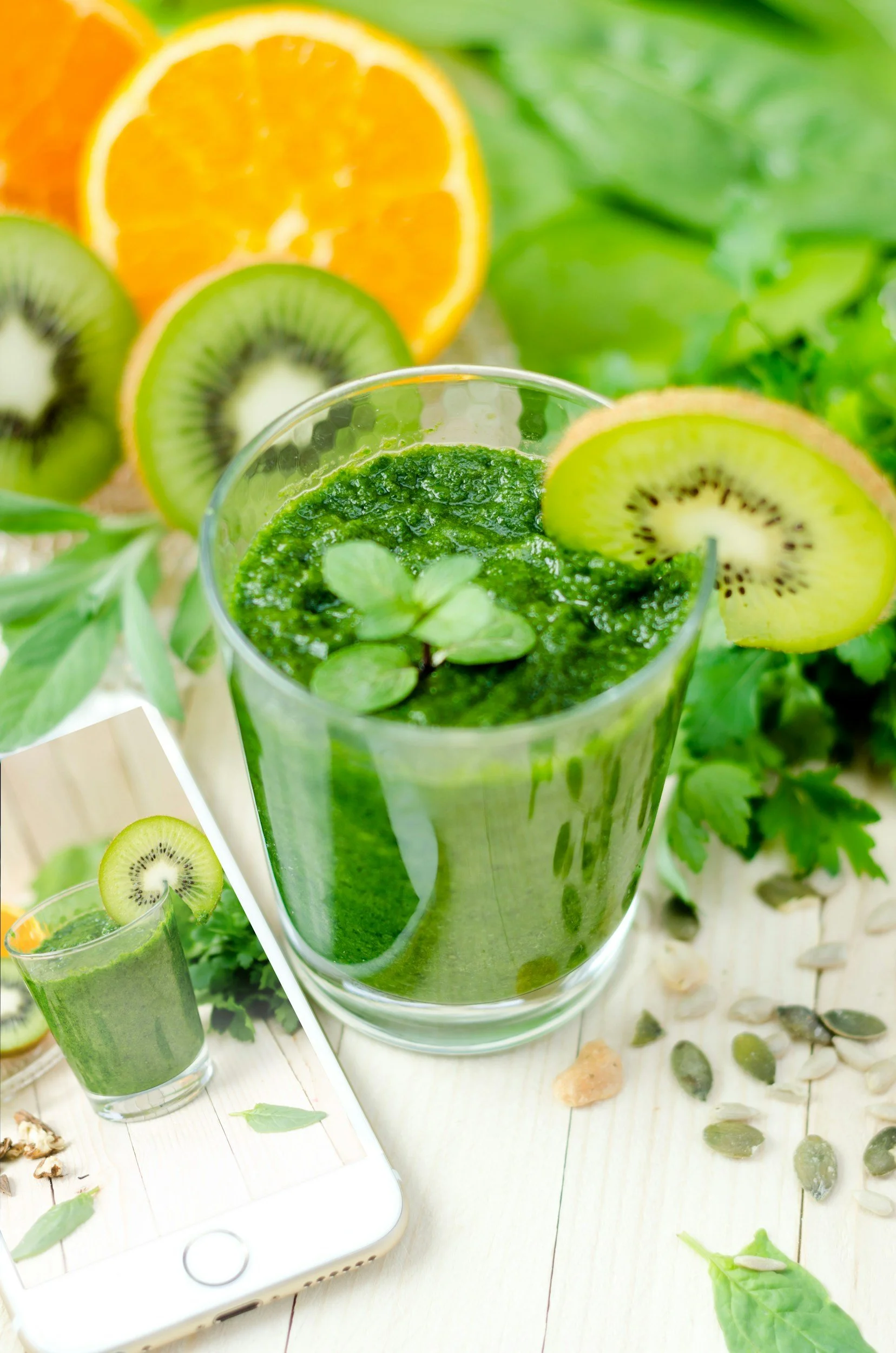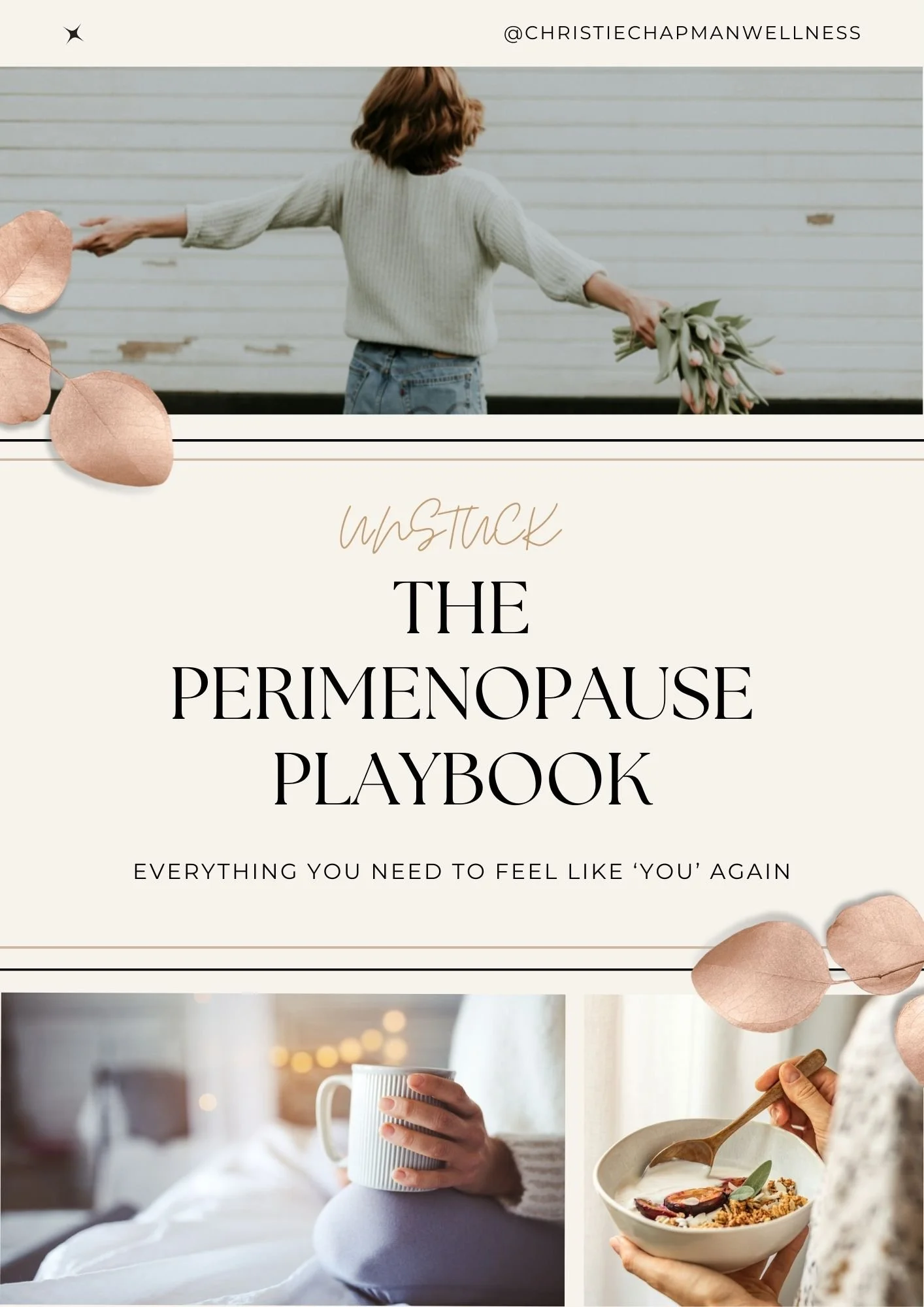Inflammation & Perimenopause: What Every Woman Needs to Know
If you’re in your 40s or early 50s and feeling more tired, more puffy, and more irritable than usual—you’re not imagining it.
What you might be feeling is inflammation—and in perimenopause, it can sneak up on you. Let’s break down what’s happening in your body, what symptoms to look for, and how simple changes to your plate can help you feel lighter, clearer, and more you again.
What Happens to Inflammation in Perimenopause?
Estrogen, the main hormone we lose during the menopause transition, has a lovely anti-inflammatory property to it, so when levels drop, your body becomes more prone to inflammation. Menopause itself is essentially an inflammatory state.
Progesterone is our calming hormone and also supports anti-inflammatory processes. When both estrogen and progesterone are inconsistent, you can feel like a stranger in your own body.
As these hormones drop, inflammation can rise—especially when it’s fuelled by:
Poor sleep
Blood sugar swings
Chronic stress
Processed foods
Hidden food sensitivities
Think of your body as losing one of its natural “fire extinguishers.” Without the hormonal buffer, even mild inflammatory triggers can feel like a 3-alarm blaze.
Why You Need to Pay Attention to Inflammation Now
Unchecked inflammation in midlife doesn’t just make you feel off—it’s linked to:
Weight gain (especially belly fat)
Brain fog and memory lapses
Joint pain and stiffness
Skin flare-ups
Mood swings, anxiety, and depression
Gut issues (bloating, constipation, IBS)
Long-term, it also increases your risk of:
Heart disease
Type 2 diabetes
Osteoporosis
Dementia
In short: inflammation accelerates aging—and robs you of your quality of life. The earlier you address it, the better your body will feel now and decades from now.
Common Symptoms of Inflammation in Midlife Women
If you're experiencing one or more of these regularly, inflammation could be playing a role:
Bloating or digestive discomfort
Fatigue that doesn’t improve with rest
Puffy face or hands
Joint or muscle pain
Skin issues like rosacea, rashes, or acne
Headaches or migraines
Irritability or feeling "wired but tired"
Trouble concentrating or remembering words
You don’t need a blood test to start paying attention—your symptoms are data.
How an Anti-Inflammatory Diet Helps (& What to Eat)
Food is one of the fastest and most effective ways to calm inflammation—without needing a supplement drawer the size of your fridge.
Think of one ingredient foods as green light foods. If it’s process (ie: comes from a box, has a bunch of fillers, seed oils, refined sugars or alcohol, proceed with caution.
The goal: Focus on whole, nutrient-dense foods that stabilize blood sugar, support gut health, and nourish your hormones.
Best Anti-Inflammatory Foods for Perimenopause:
Fatty fish (salmon, sardines): Omega-3s to lower inflammation and support brain health
Leafy greens (kale, spinach, arugula): Rich in antioxidants and fiber
Berries (blueberries, raspberries): High in polyphenols that fight oxidative stress
Olive oil & avocados: Healthy fats to regulate inflammation and support skin + hormones
Nuts & seeds (chia, flax, walnuts): Fiber, magnesium, and essential fats
Herbs & spices (ginger, turmeric, garlic): Nature’s anti-inflammatory powerhouses
Cruciferous veggies (broccoli, cauliflower, cabbage): Help detox estrogen and reduce inflammation
Bonus: These foods also help naturally support weight management, energy, and mood.
Practical Tips for Adopting an Anti-Inflammatory Diet
You don’t need a complete kitchen overhaul or a degree in nutrition. Try these real-life tips:
Start with breakfast: Swap cereal or toast for a protein smoothie or eggs + greens
Batch-cook roasted veggies: Add to lunches and dinners all week
Add, don’t subtract: Focus on adding anti-inflammatory foods before you worry about cutting things out
Go slow with swaps (see below!)—small changes make a big difference over time
Hydrate: water is critical to help move waste, calm inflammation, and help with aches and pains.
Listen to your body: If a food causes bloating, brain fog, or fatigue—it’s info, not failure
Smart Swaps for Inflammatory Foods
I believe we should be thinking more of what we can add in to our diet that will support it, rather than what we should sacrifice. By replacing common inflammatory ingredients with healthier options, you can keep your meals delicious AND nutritious.
Sugary yogurt + granola → Plain Greek yogurt + chia + berries
White pasta or bread → Quinoa, sweet potato, or chickpea pasta
Canola or vegetable oil → Extra virgin olive oil or avocado oil
Soda or sweet tea → Sparkling water + citrus or herbal tea
Cereal or bagel breakfast → Eggs, turkey sausage + sautéed spinach
Candy/sweets for energy → Dates + almond butter or protein bites
Inflammation isn’t just a buzzword. It’s a real biological fire that—if left unchecked—can make perimenopause feel way harder than it needs to be.
The good news?
You can calm the flames—with food.
No extremes. No gimmicks. Just smart, sustainable nourishment.










